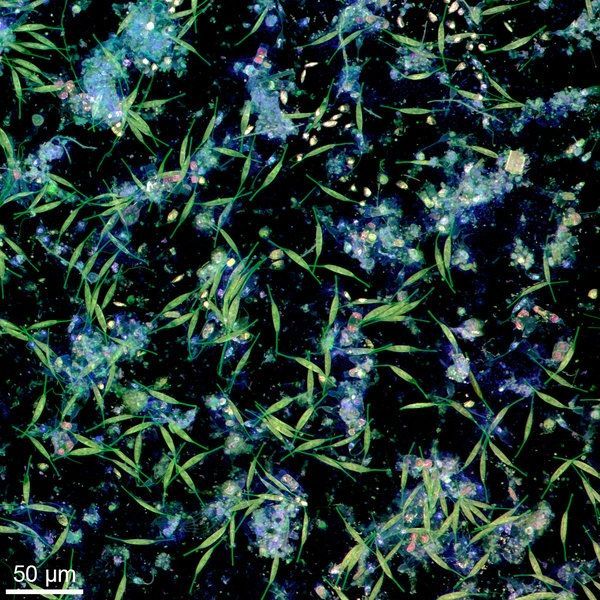Although huge amounts of plastic are present in the oceans and new plastic material is constantly added, the concentrations of microplastics in the surface layer of the oceans are lower than expected. Researchers at the GEOMAR Helmholtz Centre for Ocean Research Kiel, the Kiel Cluster of Excellence ‘The Future Ocean’ and the Helmholtz-Zentrum Geesthacht experimentally demonstrated that microplastics interact with natural particles and form so-called aggregates in seawater. This aggregate formation could explain how microplastics sink from the ocean surface into deeper water layers. The results were published in the international journal Proceedings of the Royal Society B today.
The oceans contain large numbers of particles of biological origin, including, for example, living and dead plankton organisms and their faecal material. These so-called biogenic particles interact with each other and often form lumps, or scientifically correct aggregates, many of which sink down in the water column. In addition to these natural particles, large amounts of plastic particles with a size of less than five millimetres, i.e. microplastics, have been in the oceans for some time.
Continue reading at Helmholz Centre for Ocean Research
Image via Jan Michels, Future Ocean


